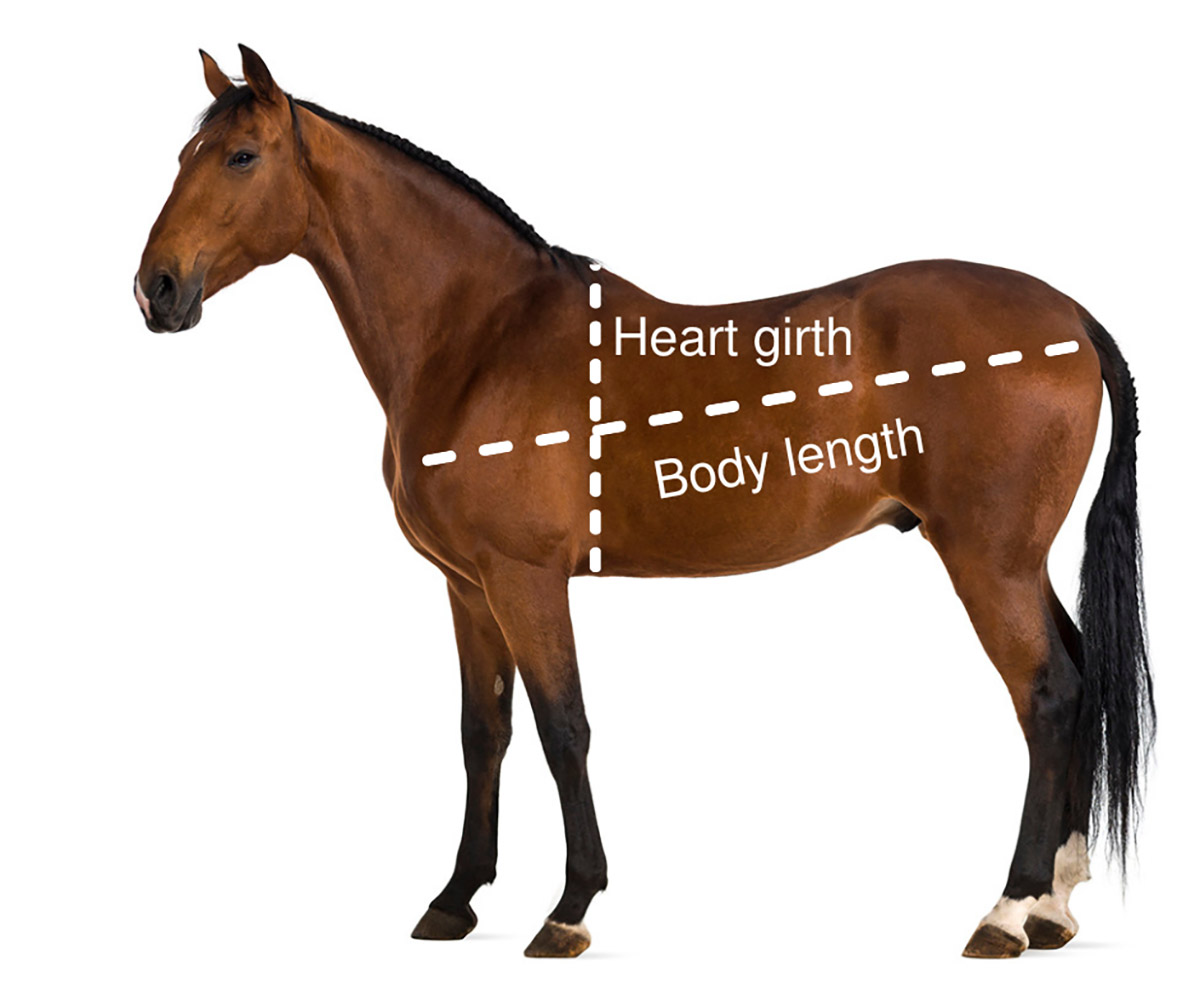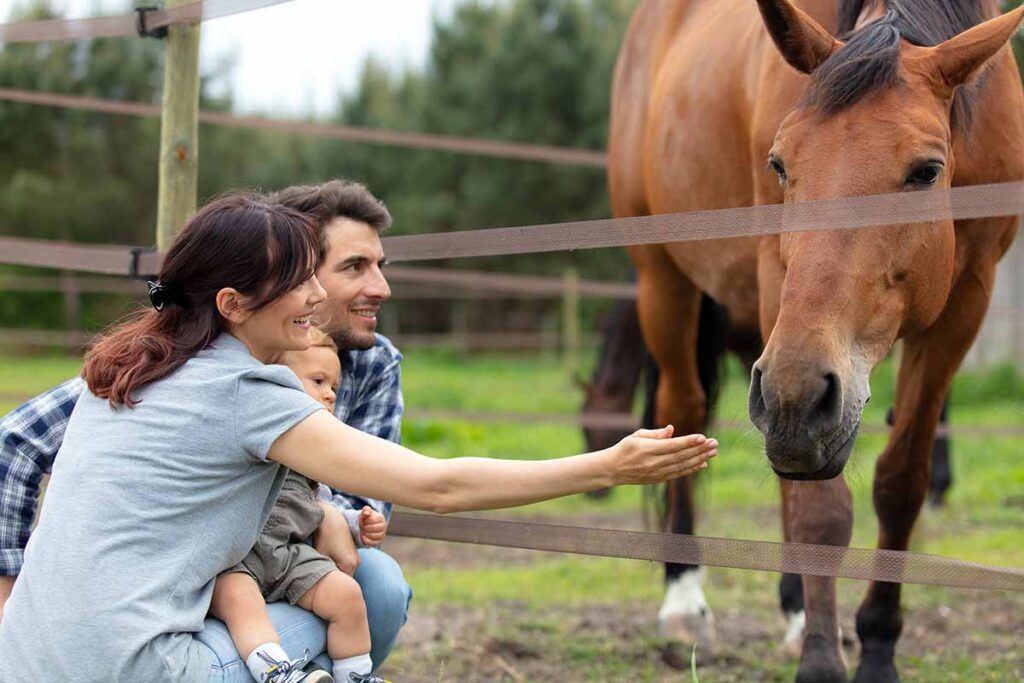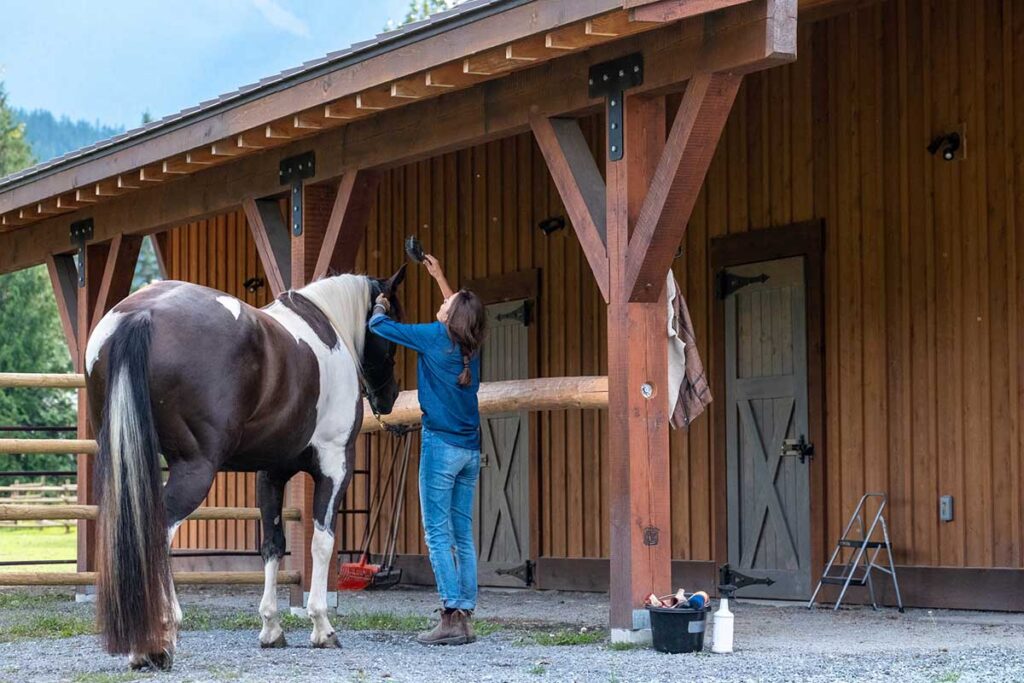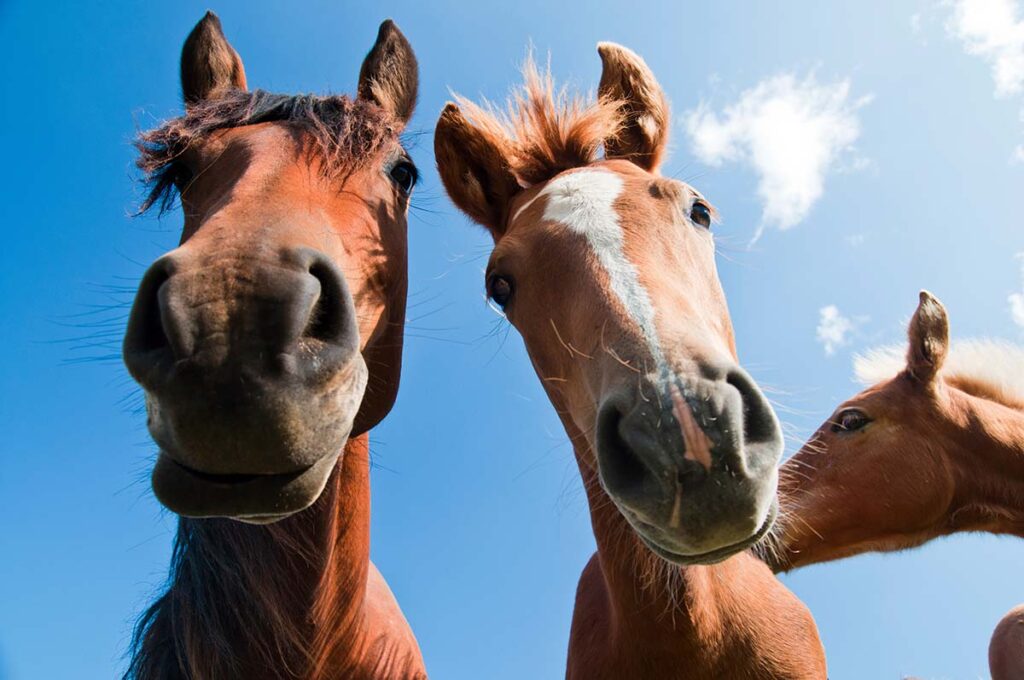You’ll never hear your horse fretting, “Does this saddle pad make me look fat?” But it serves him well if you keep an eye on his figure for him. Fluctuations in weight are generally related to feed intake, but sudden or extreme changes in condition can signal serious disease.
You can get an accurate reading by using an ordinary tape measure and the following formula:
Body weight in pounds = (Heart girth in inches2 x Length in inches) / 330
How to Weigh a Horse
First, measure your horse’s girth circumference just behind the elbows and withers at the narrowest part of the trunk. Measure body length from the center of the front of the chest, straight back along the horse’s side to the center of the tailbone.
An example: For a horse with a girth of 75 inches and body length of 80 inches, the calculation would be: 752 x 80 inches = 1,363 pounds.



Best Weight Tape Practices
Using this formula, you can monitor your horse’s condition over time simply by taking his girth measurement and recalculating the weight whenever the measurement changes (a mature horse’s length should remain constant, although a substantial weight loss or gain will affect it as well). For best results, be absolutely consistent in your measuring technique, placing the tape measure at the same spot and holding it with the same tension each time you assess your horse. Weight fluctuations of 5% or less are usually the result of minor dietary changes, while greater gains or losses are good reason to examine your horse’s health and management to be sure he’s receiving optimum nutrition and is free of stress, illness, or other debilitating conditions.
Related Reading: How To Easily Determine Your Horse’s Body Condition Score
Are you enjoying this content? Sign up for My New Horse’s FREE newsletter to get the latest horse owner info and fun facts delivered straight to your inbox!








